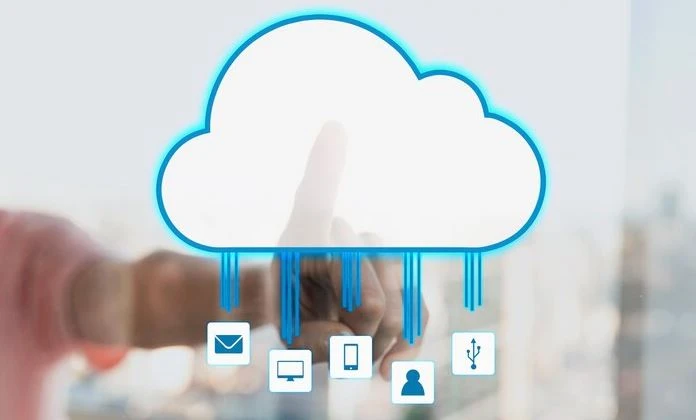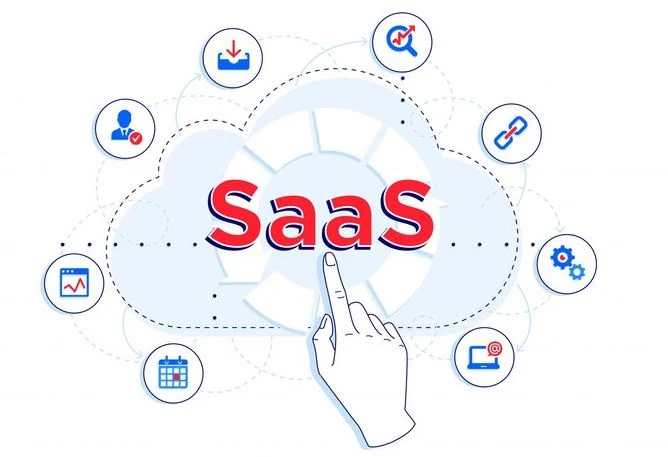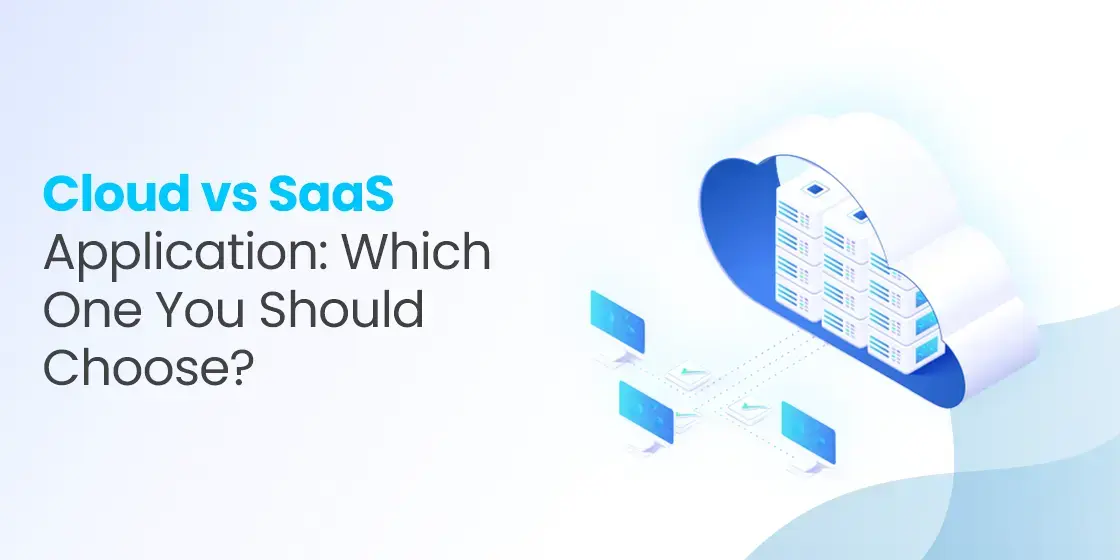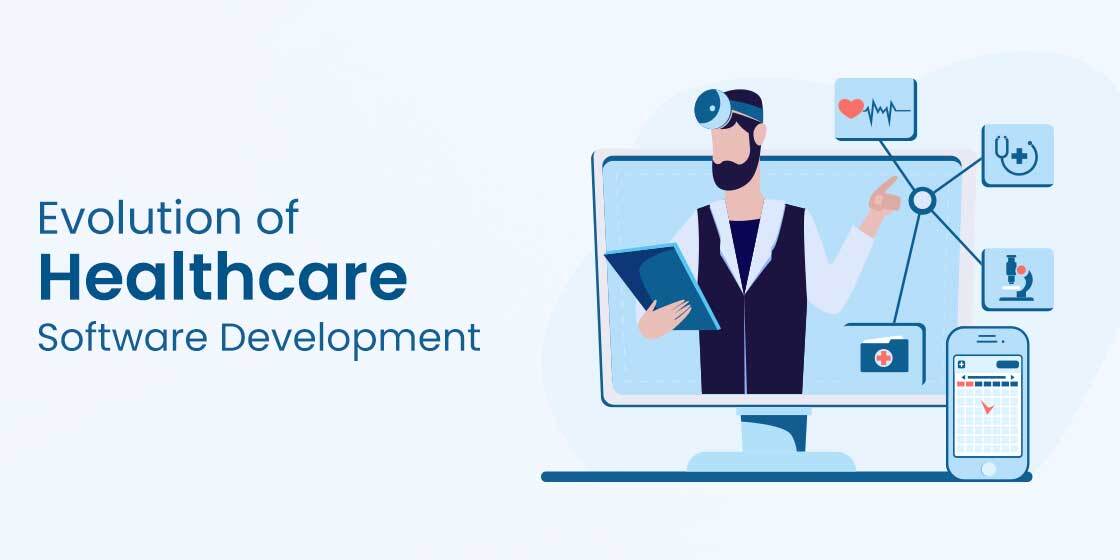Table of Content
Know the Key Differences Between Cloud and SaaS Applications
Being a business owner, you need to think twice before launching any application. You need to look at the viability of each project, as that will help you to make better decision. Currently, cloud and SaaS applications are becoming increasingly popular in the industry. Businesses are therefore interested in building these apps, as they provide better benefits and utilities to them. But before making any decision, stakeholders also need a clear understanding between cloud vs SaaS application. They are quite identical in functionalities, but also differs in few areas that are important to consider.
For starters, there is a thin fine line between cloud and SaaS applications. If you look at the deployment structure, most SaaS apps are hosted on cloud servers, but that context can’t be used to call them a cloud application. Similarly, not every cloud software will be a SaaS app, because its functionalities and features can differ from the concept of SaaS. Understanding this is important for stakeholders, as it allows them to pick the right software development services for the desired application.
In this blog, we will try to clear plenty of your confusion between cloud and SaaS applications. If you are interested in building one of these apps, make sure to read the article completely. Let’s start from the basics understanding why cloud and SaaS apps are becoming popular in the industry.
Rising Demand of Cloud and SaaS Applications

Cloud and Software-as-a-Service (SaaS) applications are becoming increasingly popular in the industry due to their scalability and cost-effectiveness. Unlike traditional on-premises solutions, cloud-based services allow businesses to scale resources up or down based on demand, eliminating the need for expensive hardware investments. Companies can subscribe to SaaS applications on a pay-as-you-go basis, reducing capital expenditures while ensuring they have access to the latest features and updates without additional costs..
Another significant factor driving the adoption of cloud and SaaS applications is their accessibility and ease of deployment. These solutions enable employees to access business applications from anywhere with an internet connection. Unlike traditional software that requires lengthy installations and maintenance, SaaS applications are hosted in the cloud and managed by the provider. As businesses increasingly adopt hybrid and remote work models, the ability to access applications from multiple devices enhances productivity and operational efficiency.
Security, and integration capabilities have also contributed to the rising popularity of cloud and SaaS applications. Leading providers implement robust security measures, and regular security audits to protect sensitive data. Furthermore, modern SaaS platforms offer integration with other business applications and cloud services, allowing companies to create a seamless digital ecosystem. These factors make cloud and SaaS applications a preferred choice for organizations aiming for agility, security, and scalability in an increasingly digital world.
What is a Cloud Application?

A cloud-based application is a software program that runs on remote servers rather than on a local computer or on-premises infrastructure. These applications are accessed through the internet, allowing users to interact with them via web browsers or dedicated client applications without needing to install the software on their devices. Cloud-based applications leverage the computing power, storage, and networking resources of cloud service providers, enabling seamless performance and availability without requiring users to manage hardware or software maintenance.
One of the key advantages of cloud-based applications is their scalability and flexibility. Since they operate in the cloud, businesses and users can easily scale their usage based on demand, adding or reducing resources as needed. This makes cloud applications ideal for companies with fluctuating workloads or rapid growth. Additionally, cloud applications receive automatic updates and maintenance from service providers, ensuring that users always have access to the latest features, security patches, and performance enhancements without manual intervention.
Cloud adoption also enhance collaboration and accessibility. Users can access their applications and data from any location with an internet connection, making them ideal for remote work and team collaboration. Features such as real-time document editing, cloud storage, and integration with other cloud services enable efficient teamwork and data. Moreover, many cloud applications include robust security measures, ensuring that data remains protected while benefiting from the convenience and efficiency of cloud computing.
What is a SaaS Application?

A Software-as-a-Service (SaaS) application is any software solution that operates remotely rather than being installed and managed on a company’s on-premises infrastructure. Unlike traditional software, which requires local installation and maintenance, SaaS applications are hosted on external servers and accessed via the internet. This cloud-based model allows businesses and individuals to use powerful software tools without investing in expensive hardware, reducing IT management complexities.
In most cases, AI SaaS products are accessed through a web browser, eliminating the need for users to download or install software. These applications are hosted in the cloud, meaning that all data processing, storage, and updates are managed by the service provider. This setup ensures that users always have access to the latest features, and performance improvements without requiring manual updates or IT intervention. Additionally, SaaS applications are designed to be platform-independent, allowing users to access them from various devices.
While there are rare exceptions where a SaaS-based product might have an offline mode or require local components, the vast majority rely on cloud infrastructure. This cloud-native approach enables businesses to scale their software usage as needed, ensuring flexibility and cost-efficiency. Moreover, SaaS applications often integrate with other cloud services and enterprise tools, enhancing workflow automation, and overall productivity. By leveraging the cloud, organizations can focus on their core business functions without the burden of software maintenance.
What’s the Difference Between Cloud and SaaS Applications?
The primary difference between cloud and SaaS applications lies in their scope and functionality. A cloud application is any software that operates on cloud infrastructure, meaning it is hosted on remote servers and accessed via the internet. Cloud applications can include a wide range of solutions, such as Infrastructure-as-a-Service (IaaS), Platform-as-a-Service (PaaS), and SaaS itself. In contrast, SaaS applications are a specific type of cloud application that delivers software to users on a subscription basis, fully managed by a third-party provider.
Another key distinction is that cloud applications can offer a mix of local and cloud-based processing, whereas SaaS applications are entirely managed by the provider. Some cloud applications may require users to install a component locally while leveraging cloud storage or processing power. Examples include hybrid cloud solutions where businesses manage part of the application on their own infrastructure while utilizing cloud resources for scalability. SaaS applications, on the other hand, are fully cloud-hosted, requiring no local installation or maintenance.
Lastly, cloud applications provide more customization and control compared to SaaS solutions. Businesses that use cloud applications can configure infrastructure settings and even deploy custom applications within a cloud environment. In contrast, SaaS applications are typically designed for ease of use, with standardized features and limited customization options beyond available integrations and API access. SaaS solutions are ideal for businesses seeking readymade applications with minimal setup, while cloud applications offer more flexibility to the organizations.
Frequently Asked Questions
| What is cloud-based application? A cloud-based application is software that runs on remote servers and is accessed via the internet, rather than being installed on a local device. It utilizes cloud computing resources for storage, processing, and scalability. |
| What is a SaaS application? A SaaS (Software as a Service) application is cloud-based software that users access via the internet on a subscription basis. It is hosted, maintained, and updated by a third-party provider, eliminating the need for local installation. |
| What are the differences between cloud and SaaS apps? Cloud apps are broad applications that run on cloud infrastructure and can include various models like SaaS, PaaS, or IaaS. SaaS apps specifically refer to cloud-based software delivered as a service to users via the internet, typically on a subscription basis. |
Final Words
That sums up our entire article in which we have discussed core differences between cloud and SaaS applications. Being a project stakeholder, you need to know how both technologies operate, because it allows you to choose the right development model for applications. Both cloud and SaaS applications are very popular in the market, offering various types of operational benefits to the businesses. If you want to build one of these apps, try to first understand your core app objectives, as that will allow you to allocate development resources more accurately.
Empower your digital initiatives with BariTechSol, a premier custom software development company. Our skilled team tailors cutting-edge solutions to your unique needs. Elevate your tech experience and stay ahead in the digital realm. Partner with BaritechSol and code the success of your next big idea.


